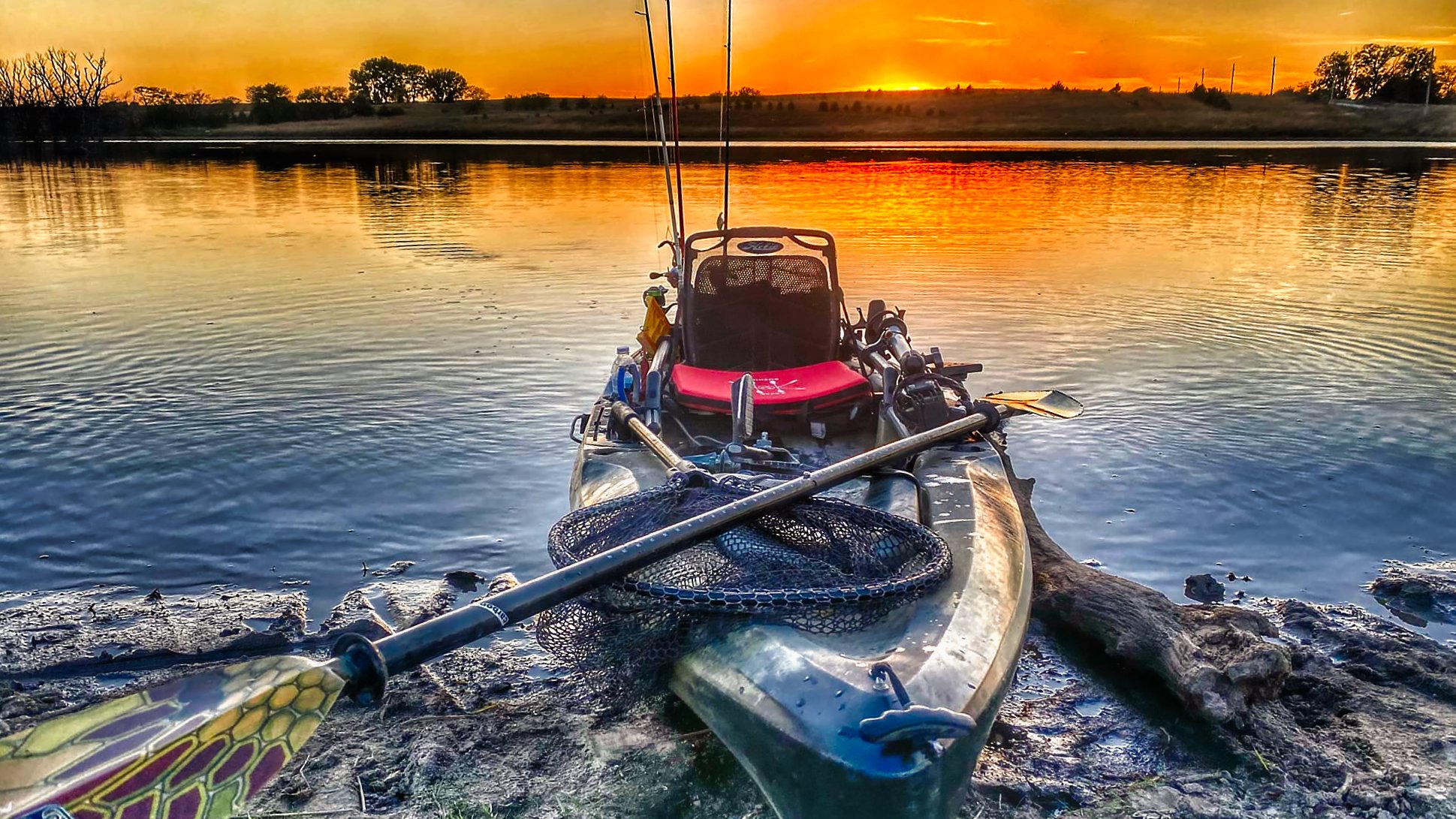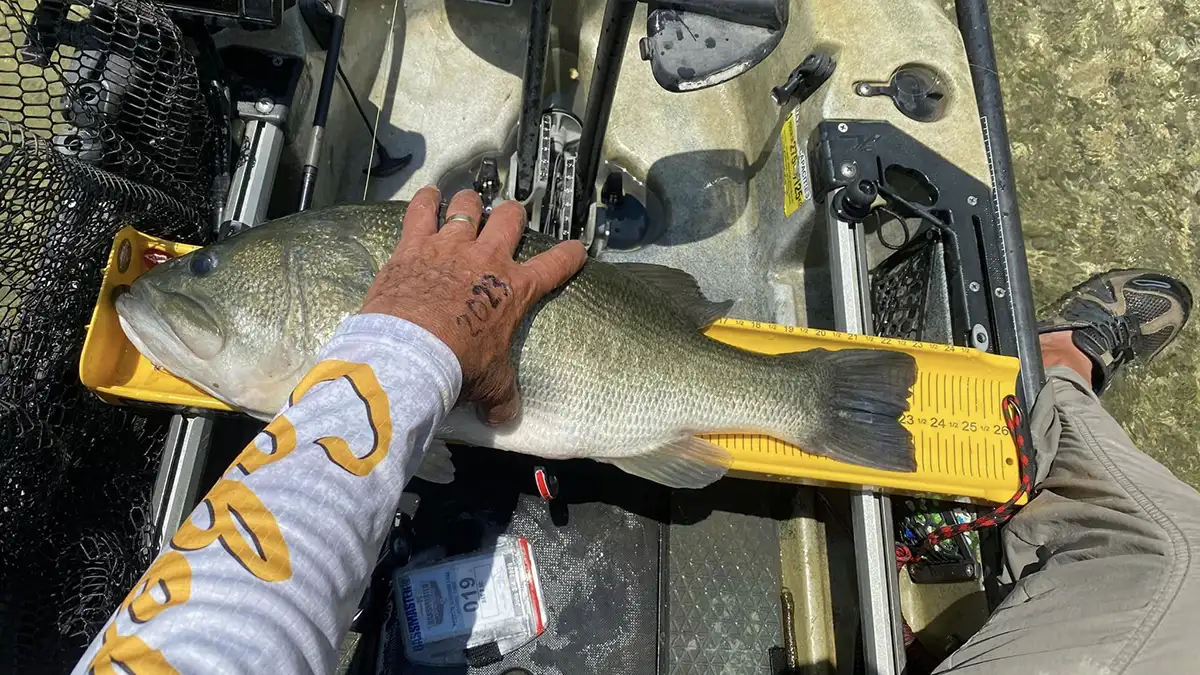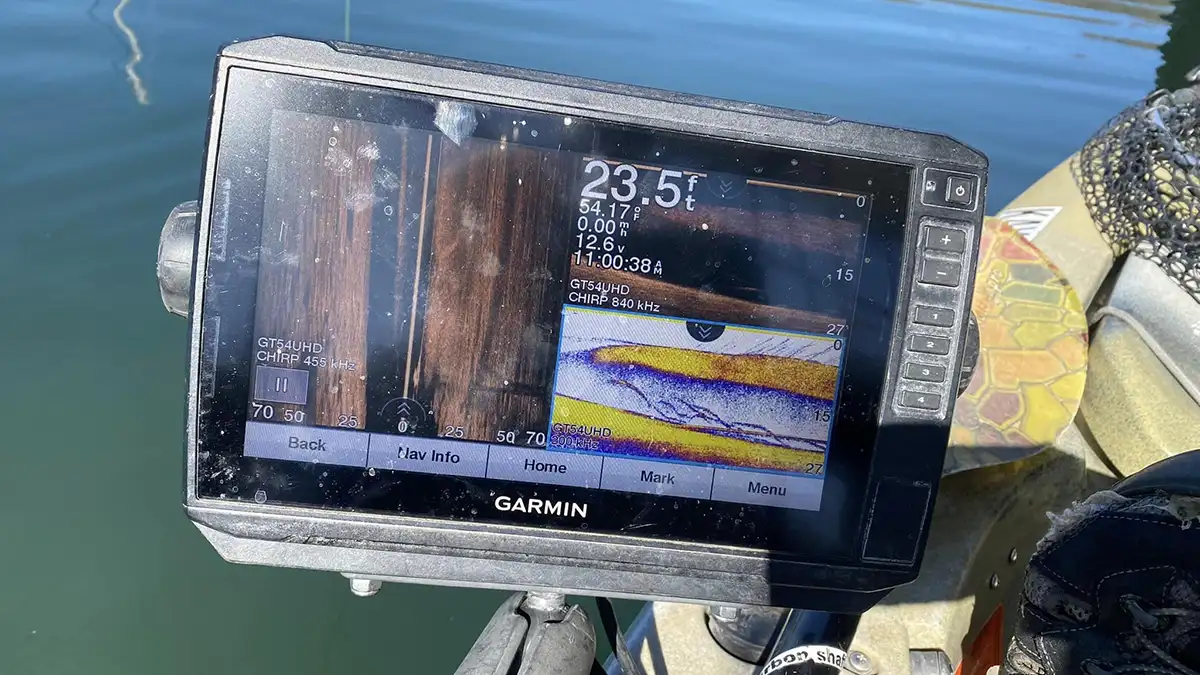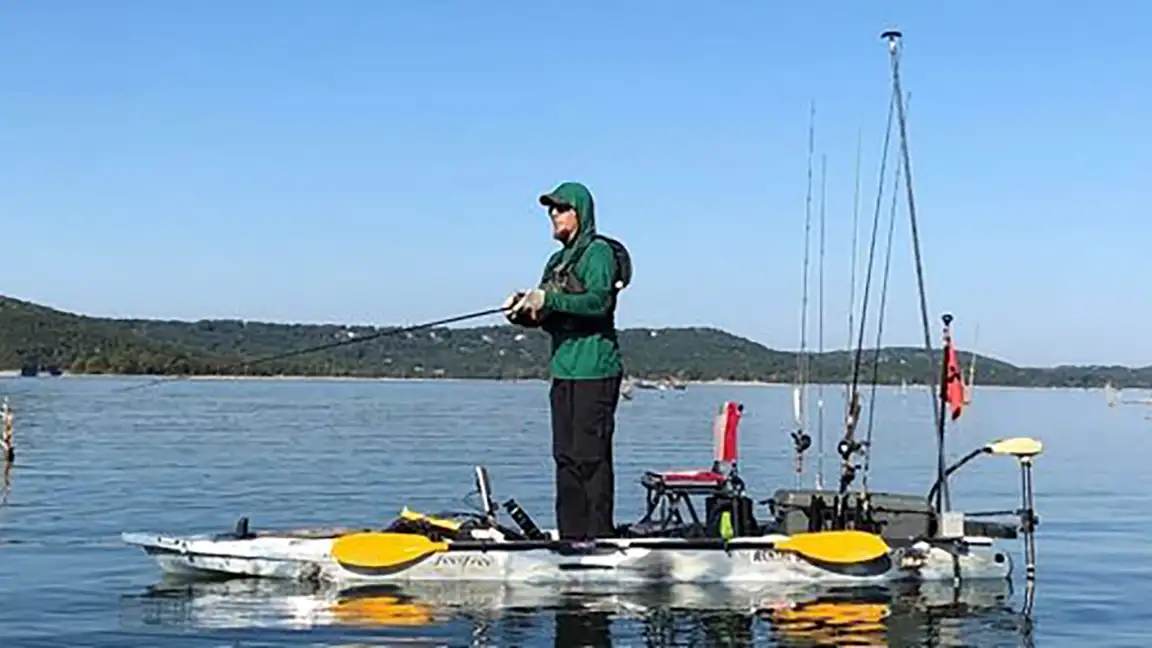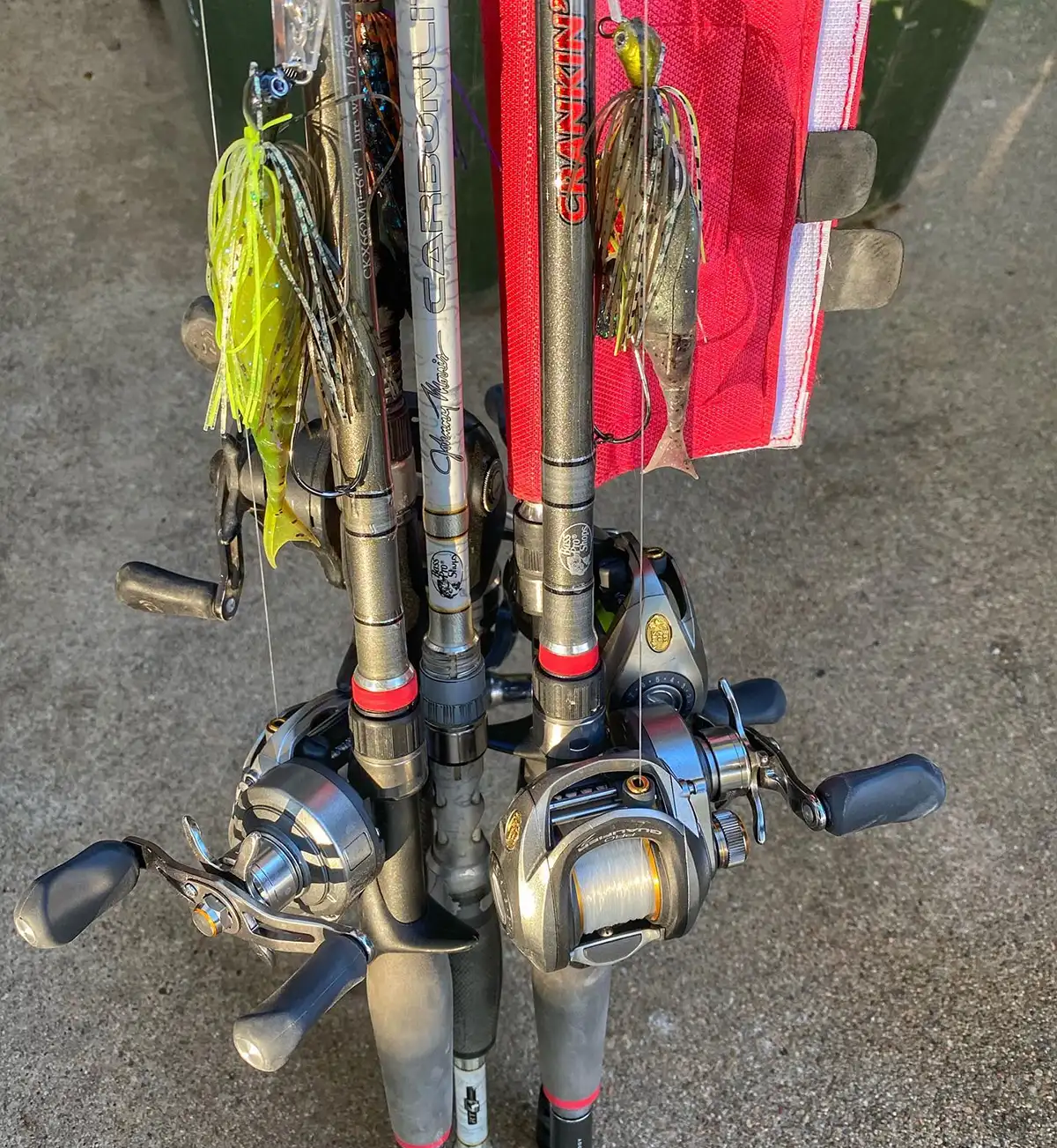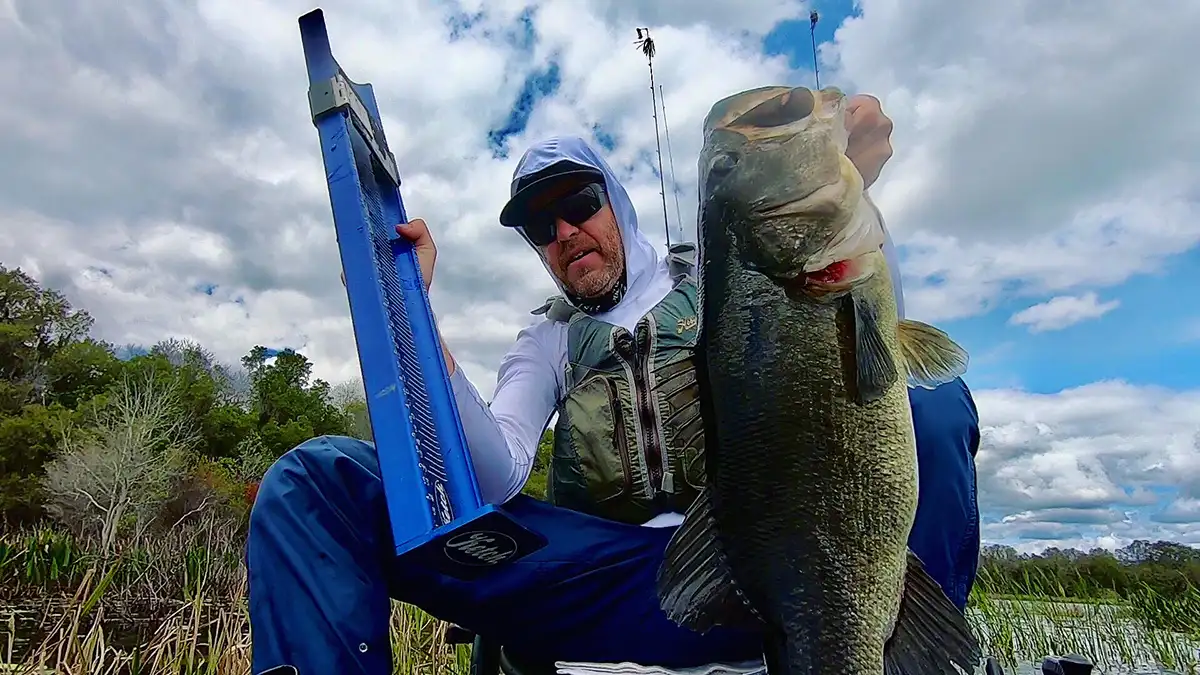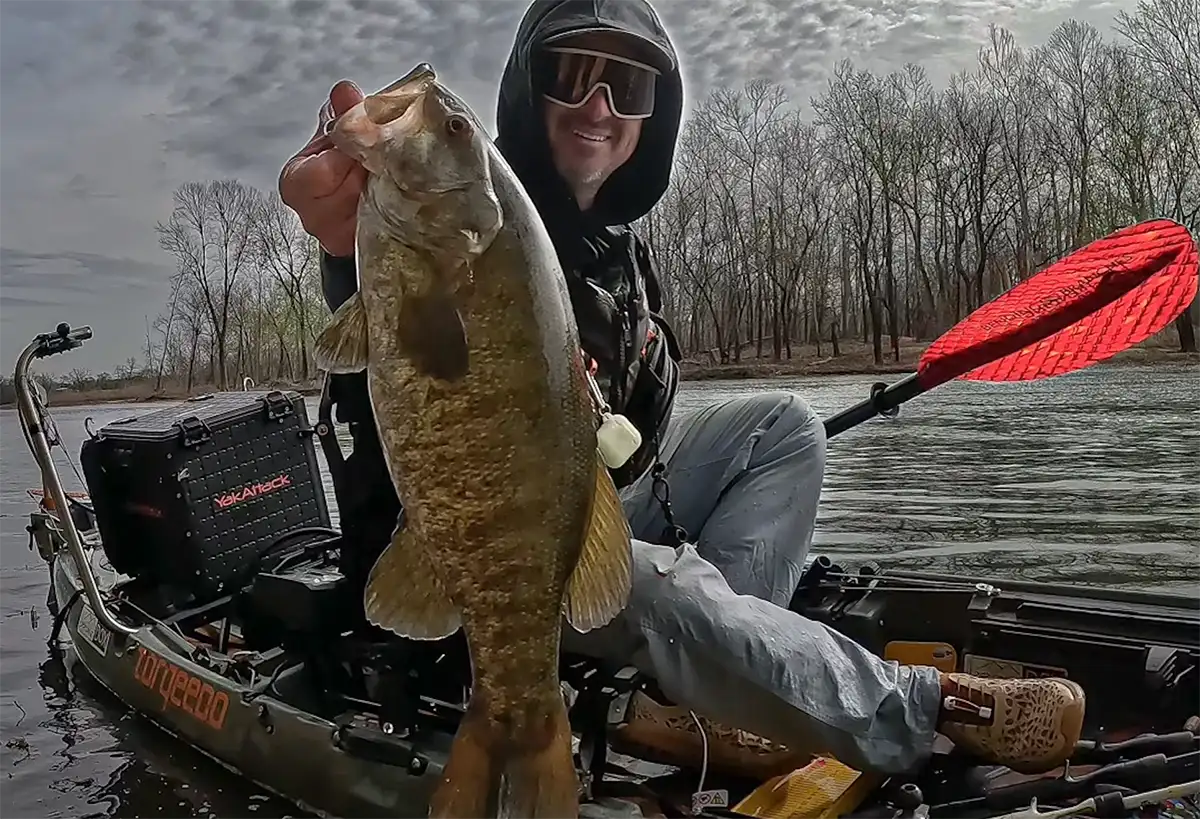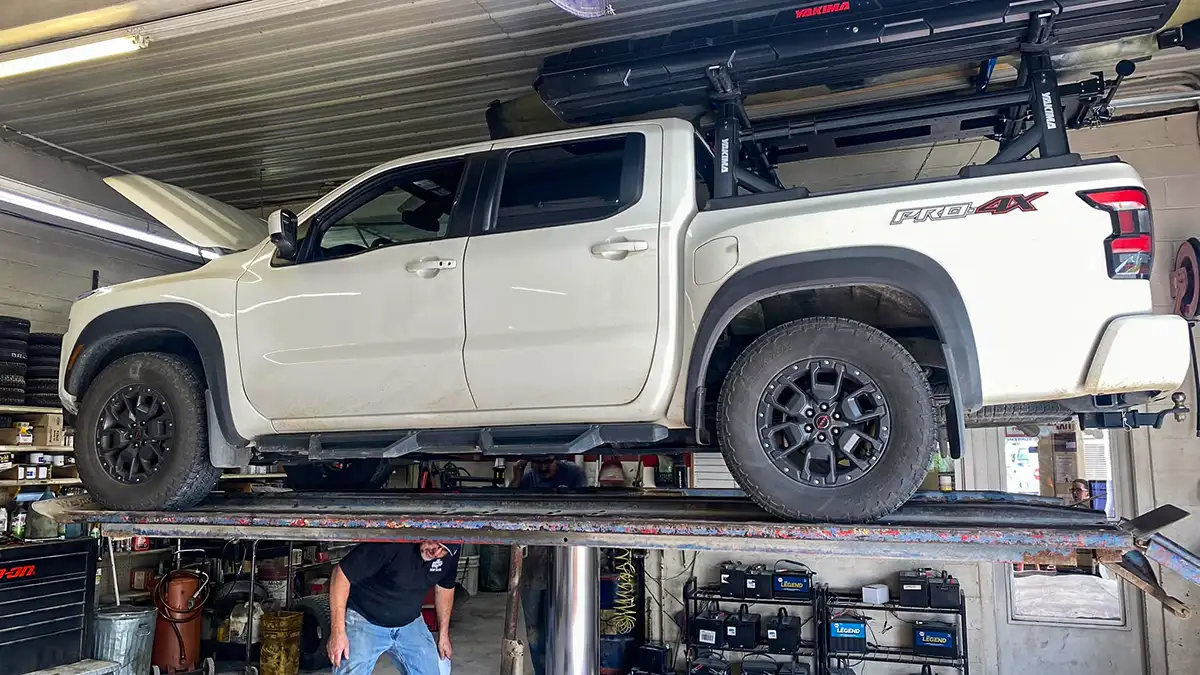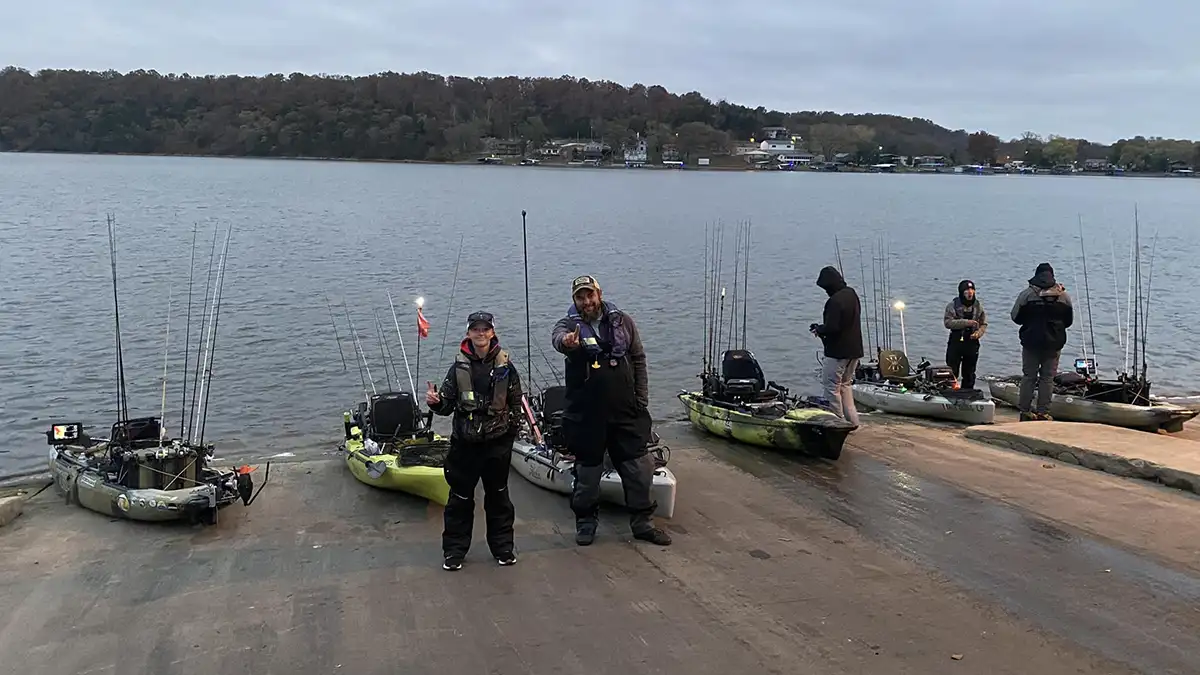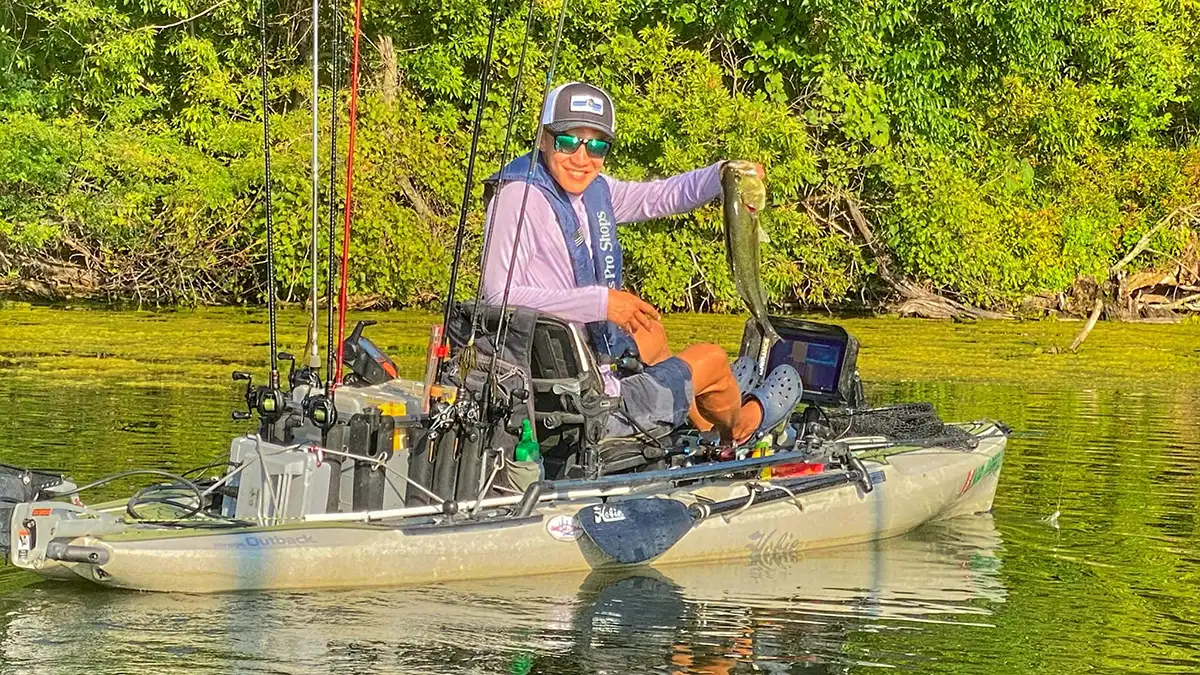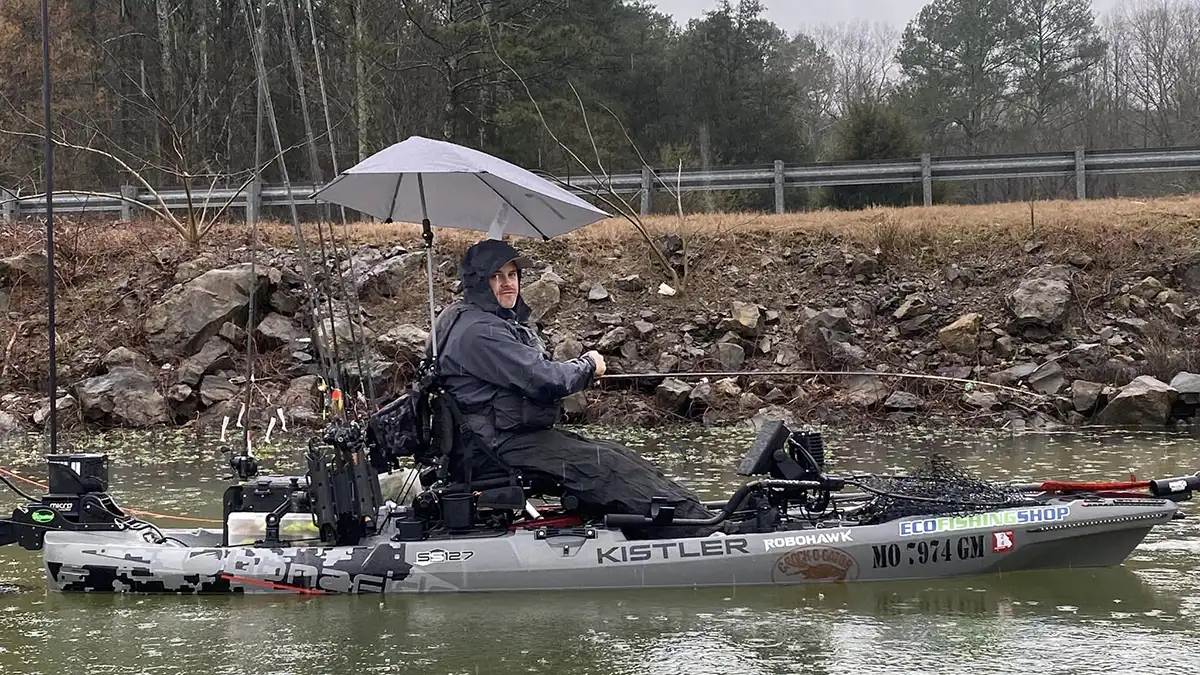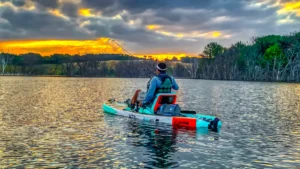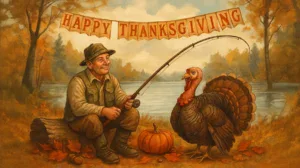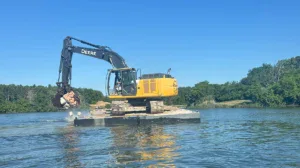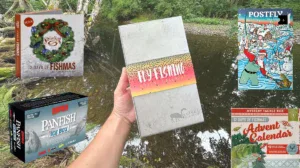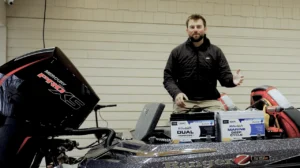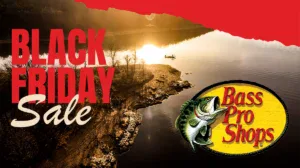Kayak tournaments are one of the biggest growth areas in all of tournament fishing as the sport of kayak fishing has exploded over the last decade. While there are a lot of rewards to kayak tournament fishing there are also a lot of new obstacles when preparing for a kayak tournament compared to bigger boat tournaments. So I thought a thorough discussion of how to prepare would help a lot of anglers new to the sport.
HOW IT STARTS
It was 2004 and kayak fishing was emerging as a very popular outdoor activity across the country. Being one with the outdoors on a kayak brought us even closer to nature and the experiences were amazing. I wondered if there were any others out there nearby enjoying the same benefits as myself so I set up a small kayak fishing tournament at a local lake and hit the online message boards to see if anyone else was interested.
Sure enough, there were a few others out there who wished to test their fishing skills against others in this contest. We had about a dozen contestants show up with kayaks, canoes, and even a homemade wooden kayak.
The challenge was to catch one of each species in the lake and check it off on a small piece of paper with a pencil given to each contestant in a plastic baggy. There were nine species in the lake. It was all conducted on the honor system. Afterward we gathered around for the awards of trophies and enjoyed some outdoor cooked Dutch Oven stew. From there we grew this event and would eventually move it to a more urban area to draw even more interest.
We would also eventually use digital cameras and phones to record our catches.
Now, twenty years later you can find a kayak fishing tournament nearly every weekend somewhere close by that has open water and fish in the lake. Most tournaments are black bass oriented and usually have three to five fish as the standard for a limit to be measured and judged for placings.
You can easily find these local tournaments that are promoted on social media or search on Google. Another method is to search on an App called TourneyX or Fishing Chaos. Some organizations even offer weekend or monthly online events. This cuts down on travel costs and gives the angler the opportunity to fish when and where they want locally. Some of these are usually limited to a local state or sometimes go nationwide. There are a multitude of opportunities to sign up for a contest just about anywhere in the country.
Kayak fishing clubs abound in just about every state these days with monthly derbies where you can earn “Angler of the Year” points for cumulative prizes. Sometimes these events will qualify you for regional or national events that are also conducted all across the country.
Using the previously mentioned apps these fishing contests whether virtual or in person will have you submit a photo of your catch displayed on a certified measuring board and judged according to their specific rules. The evening before the tournament or sometimes just before it begins an identifier will be given that you must have in the picture with the fish to verify it was caught that day. Most kayak fishing tournaments are CPR (Catch, Photo, Release) thus returning the fish immediately to the water to be caught again another day. This preserves the habitats and helps with establishing more and bigger fish in the future.
It is very important to look at the rules established for each tournament you fish. While most tournaments have common rules and guidelines they may vary. There may also be several launch points established if not using a shotgun start at the beginning of the tournament.
Tournament fees can range from a small weekly night league fee of a few bucks to around $400 for a national caliber tournament these days. Most, though, range from $25 to $50. Usually there is a 100% payout to 10% of the field in a scaled format.
BARE ESSENTIALS
Entering a kayak fishing tournament can be a bit stressful for the first time angler. The most important items you will need are your PFD (Personal Floatation Device), whistle, kayak, paddle, rod combo, and the lures you will use to catch fish. You will also need a certified measuring board. The “Ketch” board is the most commonly used these days and can be carbonate or aluminum. The carbonate is a more economical choice when on a budget. These boards can easily be ordered online. Some local kayak shops may also carry them.
OTHER ESSENTIAL EQUIPMENT
Most tournaments start before sunrise which will require you to follow your state’s coast guard regulations regarding lighting your craft. Most importantly, a 360 degree white stern light. If you are using a motor on your kayak you will also need a red and green light near the bow of your craft.
Be sure to bring your phone along as well! An important accessory you might also consider is a phone leash. The Robohawk leash is a very popular accessory and you can even order them for other items you don’t want to lose overboard as well. With that, you might even create a checklist on your phone you can go to before your tournament to be sure you have all that you need for the day.
Midwest kayak angler Stony Floyd makes a checklist before competing in a tournament.
“I think making a list keeps you from forgetting things that can either ruin the trip or end it for that matter,” Floyd said. “Organization or the lack of can determine how enjoyable the trip is and how successful you end up.”
You can easily create a simple checklist on your phone where each item you have listed can be checked to be sure you have all you need for the day.
OPTIONAL EQUIPMENT
You might consider the following items as well and add them to your checklist each time you participate in a tournament. A pair of needle nose pliers will come in handy for those sharp treble hooks you might have on your lure. A net can provide additional assistance in landing those bigger fish as well. Having a set of line cutters can help when you need to retie.
A headlamp will help you with vision before it gets to first light. A crate of some sort that easily fits behind your seat in the kayak can provide storage for extra lures, first aid kit, extra batteries, rain gear, toilet paper, fish towel, water, sunglasses, and bailing device. Having a black sharpie ready to use in case you need to write a last minute identifier code on your hand or card can come in handy. An inexpensive milk crate will work and you can even attach some short pieces of PVC pipe to hold your rods. You might even consider the YakAttack “BlackPak” crate which comes with a lid to help keep your items dry.
MAP STUDY AND FISH FINDER EXPLORATION
Many anglers choose to add some type of sonar unit to their kayak to help locate submerged structures and of course, fish. Some have even added front facing sonar. With the addition of this type of technology on your boat you will also need fully charged batteries. You want to add this task to your checklist for sure!
It is also a good idea to study your contour maps before the contest. Eliminating as much water before your contest can greatly reduce time looking for fishing spots on game day. Many anglers research the lake they are fishing on YouTube or social media.
“The Information Age is accurately named. Hands down the biggest prep “item” in my line of work is information via Google Earth and other online applications.” says Dusty Yakker from Illinois. “Before I even arrive in vast and unfamiliar water I feel like I know a few things. Doing your homework, as they say.”
There are usually quite a few videos created from just about every major lake in the country these days. Navionics, Omnia, HuntOnX, and the Deep Dive app are great resources for helping you find spots that might produce fish before you even get on the water. Getting a couple days of on the water practice can greatly enhance your chances by locating areas and patterns that might be transpiring that week. Be sure to mark your waypoints as you travel about the lake. It’s always a good idea to find out the lay of the lake before you actually fish in the tournament.
The most recent Bassmaster Kayak Series Champion, Drew Gregory and one of the most successful kayak bass anglers in the country uses a strategy that is focused on catching the biggest fish from a structured schedule.
“Working backwards from the farthest away destination and creating a timetable for the day based on the speed of my motor and where I need to be at a certain time gives me the best odds for success,” Gregory said.
He has a plan and usually sticks to it but is still fishing at the moment as he explores his chosen fishing spots. He also researches previous tournaments and checks the weights and lengths to determine what it will take to win the tournament. Knowing what it takes to win will help with the game plan and helps in practice of how much time to spend at each location if needed. Following his time table helps him to not be rushed into rapid changes and gives him confidence in fishing the chosen areas in his kayak.
ELECTRIC MOTORS
Kayak Motors are fairly new to the tournament scene. Just a few years ago discussions ranged around what types of paddles worked best for anglers. Today, it’s about speed and maneuverability. The added HP of a motor can get the angler to their favorite spot very quickly and if it doesn’t work out allows the angler to travel further distances than the paddler in a shorter amount of time. The use of a GPS anchor on the trolling motor can also keep an angler in position to make more accurate casts. Be sure you have your battery charged up for your motor as well! It is always a good idea to test your motor before heading out.
FISHING TACKLE FOR KAYAK TOURNAMENTS
A kayak can only handle so much gear and if you are a tackle junkie it will be difficult to take it all. Sorting out what is most important for you and using baits you are most confident in using helps reduce the number of lures you take out on the water with you.
Organization is key here so that you can easily find the lure you need. I’ve seen everything from plastics in garbage bags to intricately labeled boxes with lures categorized by the type of presentation.
Be sure to have your terminal tackle and some extra fishing line if you use leaders. This is where your fish crate can be of great use in storing your lures.
RODS AND REELS FOR KAYAK FISHING
Dialing in your approach to the tournament is essential in the number of rods and reels you take out on the kayak. Unlike the bigger boats we are limited on the number of combos we can take out with us. Some anglers take a double digit number of combos out with them while others attempt to dial it down to just three or four rods. Having a backup rod and reel of your most confident presentation might be a good idea as well.
Be sure to have your rods and reels clipped in their respective rod holders with an elastic lanyard and clip. I’ve seen many rods go into the lake as anglers did not have them attached to a safety cord. As for types of rods it is always good to have a topwater bait, moving bait, finesse presentation, and a jig rod with you. This covers most types of presentations and you won’t regret forgetting it when you need it.
ORGANIZE YOUR KAYAK GEAR
Again, organization of your gear is essential for your success. Where you place your batteries, rods, tackle, net, measure board, food, drink, pliers, rain gear, or anything else you decide to bring needs to be efficiently organized and easy to get to. Practicing this ahead of time at home can greatly reduce your stress once you start your launch at the ramp.
KETCH BOARD TIPS FOR MEASURING FISH IN A TOURNAMENT
After landing your fish in the kayak you will then need to lay the fish on the Ketch Board and take a photo of it. This is something that you need to practice, practice, practice…Just like the pros, you’ll have fish get free and flop back into the water. It’s frustrating but part of the game. A great tip is to stick you net up sideways to the left of the board so that if the fish flops off it will land back in the net for another try.
One thing you should try to do a photo is to dip your board in the water before placing your fish on it. This will cool off the surface of the board so the fish doesn’t panic and flop off back into the water. You will want to keep things comfortable for your fish for a good photo.
There also some guidelines you might want to adhere to when photographing your fish on a Ketch Board.
- The fish should have its mouth closed, as you could face a deduction for an open mouth on the fish.
- Keep your hands and fingers above the gill plates.
- Be sure the eye of the fish is visible. If the eye is missing you can take an additional photo of the other side of the fish and also create a video of the fish for judges to see that it was still alive when you caught it.
- Be sure you have the identifier completely in the picture. The identifier may not be placed on the fish. There are various accessories that can hold your identifier like the “Tourney Tag” or attachments available for the Ketch Board. Some tournaments allow you to write the identifier on the back of your hand with a Sharpie.
- Take multiple photos of the fish and then check that you have a clear photo before releasing the fish. Keep the fish in your net or on a clip attached to the kayak while you review your photos to minimize the stress to the fish.
- Be aware of the submission deadlines and have a back up plan for service in case you are not able to upload your pictures from the water.
PERSONAL PREP FOR KAYAK TOURNAMENT
“Diet, admittedly, is a crucial tournament prep component as well,” said avid tournament angler Dusty Yakker. “Sleep, focus, energy and decision making are all aided by simple hydration and agreeable food. Water intake and pre cooked meals are the norm and it starts before I leave home. Road food will not only nickel and dime you, it’ll pickle and brine you. Fruits, veggies, greens and lean meats. Sushi when you win. Eat well—feel well—fish well.”
TOW VEHICLE PREP
Yakker also adds some wisdom about our vehicles that haul our plastic boats.
“Maintaining an edge on the water is tough when you don’t maintain your truck or your trailer. I’ve put 130k on my truck in 4 years and many more on the trailer bearings. Keep that stuff looking good and you won’t worry where you don’t have to. In the kayak game, you put just as many miles on exploring from launch to launch as you do on the way to and from the actual destination.”
Your mental preparedness is also of extreme importance. A positive mindset is essential to your success on the water. Bites can sometimes be sparse and we have all witnessed tournaments won in the last few minutes by sticking with it until the last second. A simple strategy that works for me is to go out with the mindset of catching one fish. Once I get that first bite and land the fish I then go for the limit. After getting a limit I then try for an upgrade. These three simple goals will keep you engaged and you will gain much confidence as you get your bites.
It is also recommended that you bring a dry towel, space blanket, extra set of clothes, a fire starter, and first aid kit as previously mentioned and stow them in a dry bag below the deck.
BEFORE YOU LAUNCH ON TOURNAMENT DAY
Review all of your tournament rules and regulations of the tournament you are fishing. Be sure to have the tournament directors phone number added to your contact list in case you have questions while out on the water. You may also need to text the pictures you have taken for a manual upload.
Test your app soon after launching to be sure your phone is working properly.
Have a spare identifier ready in case you lose the original. A black sharpie is always a good idea in case you need to write an identifier on your hand or to modify your line or lure black. You should add a tether or floatation to your measuring board as they do sink without it. Have a USB cord or other power source for your phone. Always try to top off your cell phone charge as you drive to your launch point. Be sure to turn off all unused apps that can drain and shorten your battery charge.
Go over your pre-launch checklist to be sure you have everything you need.
Always have a float plan. In regard to this let someone know where you are launching and what time you should be returning. Look at the weather forecast for the day. Always bring rain gear regardless of the forecast. You never know!
FINAL THOUGHTS ON TOURNAMENT PREP
Your success in a kayak fishing tournament is mainly determined by good decision making and adjusting to the conditions, people around you and time management on the water. Kayak tournament fishing can be challenging at times but yet so rewarding when things come together from your practice and preparation. You will meet a lot of really neat people in this community and make a lot of new friends. Remember to stay relaxed, be positive, and most of all have fun!
